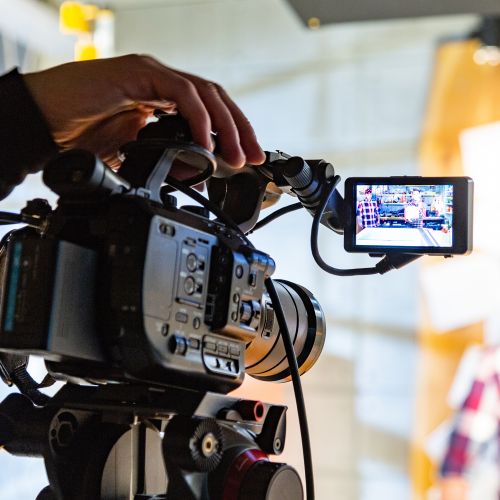Legal Videography: Changing the Way Proof is Captured and Provided
Legal Videography: Changing the Way Proof is Captured and Provided
Blog Article
Exploring the Vigor of Lawful Videography: a Comprehensive Understanding Into Its Performance in Preserving Accurate Visual Records for Legal Instances
Lawful videography stands as a vital element in the realm of lawful procedures, serving as a silent yet effective observer in the pursuit of justice. The use of video modern technology in recording lawful cases exceeds simple record-keeping; it encapsulates the very essence of events, feelings, and testimonies that unravel within courtrooms. By carefully recording visual evidence, lawful videography not only preserves the accuracy of these minutes but additionally offers a much deeper understanding of the complexities included. As we look into the functionality and relevance of lawful videography in the context of legal cases, a profound understanding dawns upon the crucial role it plays in forming the program of justice.
Value of Legal Videography
Highlighting the crucial role of legal videography in contemporary lawful process, its relevance hinges on its ability to supply undeniable visual proof that boosts the discussion of testaments and facts. By capturing online occasions, depositions, and witness testaments in a video layout, lawful videography guarantees that every subtlety, detail, and expression is accurately maintained for later evaluation. This visual paperwork works as a powerful device in court rooms, enabling jurors and judges to better understand the context of a case and make informed decisions based upon today evidence.
In addition, legal videography contributes to enhanced transparency and responsibility in the lawful system. In essence, the significance of lawful videography exists in its ability to support the integrity of the legal process by capturing and protecting precise aesthetic records that support the search of justice.
Capability in Legal Paperwork
Lawful videography's duty in modern legal proceedings expands beyond providing aesthetic evidence; its performance in lawful paperwork is essential for properly preserving the information of occasions and testaments. Through the meticulous recording of depositions, court process, witness testimonies, and criminal activity scene investigations, lawful videography makes certain an unfiltered account of occasions that can be revisited and examined throughout the legal process. This accurate documents serves as a crucial resource for courts, judges, and attorneys to reference details moments, body language, faces, and nuances that might not be totally captured in written transcripts alone.
Additionally, legal videography plays a crucial duty in maintaining the integrity of legal procedures by decreasing the danger of misinterpretation or manipulation of information. The visual records captured through legal videography offer an impartial depiction of the facts provided during a situation, using a dependable and comprehensive resource of evidence that can significantly impact the outcome of legal conflicts (Legal Videography). Basically, the performance of legal videography in legal documents works as a foundation in maintaining openness, accuracy, and fairness within the lawful system
Value in Visual Evidence Preservation
Protecting aesthetic proof through thorough recording techniques is a critical element of lawful videography. By precisely recording these visuals, legal videographers play a critical function in guaranteeing the honesty and authenticity of proof presented in court.
Visual evidence preservation likewise aids in avoiding misconceptions or misinterpretations that can arise from composed or spoken statements. The ability to see and hear events as they happened can significantly affect the end result of a case. Visual evidence can offer as an effective device for both the prosecution and protection in presenting their disagreements persuasively.
Duty in Ensuring Justice
In the pursuit of simply lawful and reasonable outcomes, the role of lawful videography is indispensable. Legal videography plays a critical role in guaranteeing justice by supplying honest and accurate aesthetic evidence that can significantly influence the outcome of legal situations. Unlike created records or testimonies, video recordings capture the subtleties of body movement, faces, and intonation, supplying a comprehensive representation of occasions as they unravel. This aesthetic evidence is particularly important in courts, where it can assist challenge or prove witness statements, enhance arguments, and ultimately add to the facility of truth and fairness.
Furthermore, legal videography functions as a way of protecting turning points and information that may be missed out on or misunderstood in composed transcripts (Legal Videography). By recording scenes, activities, and communications in real-time, lawful videography assists stop misstatements and makes certain that all events included have access to the very same info, advertising transparency and accountability in the lawful process. Inevitably, making use of lawful videography not only boosts the effectiveness of lawful procedures however additionally promotes the principles of justice and equity in the lawful system
Essential Tool for Legal Cases

Final Thought
To conclude, lawful videography plays a vital duty in preserving accurate visual records for legal situations. Its relevance lies in its functionality in lawful paperwork, importance in visual evidence conservation, and role in ensuring justice. As a crucial tool for lawful situations, legal videography works as a useful resource for providing visual proof and adding to the general stability of the lawful process.
Lawful videography's role in contemporary legal procedures extends past providing aesthetic evidence; its capability in legal documents is vital for accurately protecting the information of events and testaments. In essence, the functionality of lawful videography in legal paperwork offers as a foundation in upholding transparency, precision, and fairness within the legal system.
Inevitably, the usage of lawful videography not only improves the performance of legal procedures yet also maintains the concepts of justice and equity in the legal system.
As an important device for legal cases, legal videography serves as a valuable resource for offering visual proof and contributing to the total honesty of the lawful process.
Report this page